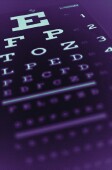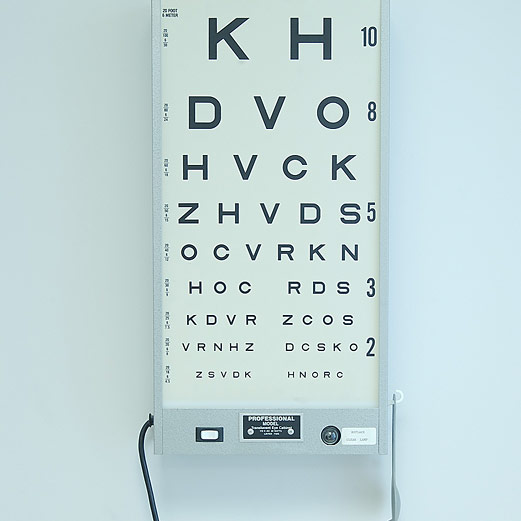
FRIDAY, April 20 (HealthDay News) — Though glaucoma has been nicknamed the silent thief of sight, eye experts now say it generally doesn’t have to be that way.
“For most people, if you treat early, you should have vision for a lifetime,” said Dr. Mark Fromer, an ophthalmologist at Lenox Hill Hospital and medical director of the Fromer Eye Centers, both in New York City, and the eye surgeon director for the New York Rangers hockey team.
Glaucoma isn’t just one disease but a group of conditions that cause damage to the optic nerve, which connects the eye to the brain. Left untreated, glaucoma can in fact cause blindness. And because the disease can progress for long periods undetected, experts stress that checkups and early detection are key to maintaining vision.
Most forms of glaucoma develop because of increased pressure in the eye, according to the Glaucoma Foundation. High eye pressure, also known as intraocular pressure, is the biggest risk factor for developing glaucoma. However, some people have what’s called normal tension glaucoma, and they can have optic nerve damage even when eye pressure is normal.
“Some people are just more susceptible to optic nerve damage,” Fromer noted.
The most common form of glaucoma is called primary open-angle glaucoma, he said. The angle referred to is where the cornea and the iris meet. Fluid normally drains through the angle. Sometimes, however, the fluid drains too slowly, which allows it to build up and increase the pressure in the eye. The increased pressure causes optic nerve damage, and, as the damage increases, so does peripheral vision loss.
If the angle narrows or closes completely, an acute form of glaucoma can develop. The pressure rises quickly and causes pain, blurred vision and halos around lights. This is a medical emergency that requires immediate treatment to save vision.
“If you develop severe pain in your eye, get seen right away at the ER,” said Dr. Gregory Harmon, a New York City ophthalmologist who’s chairman of the Glaucoma Foundation. “Without treatment, you can have a permanent loss of vision.”
People who have a family history of glaucoma are more likely to develop glaucoma themselves. Harmon said that blacks and Hispanics have a four to five times higher risk for glaucoma than whites. Older people, especially those who are also developing cataracts, have an increased risk of glaucoma as well, according to Fromer. And those who take any type of steroid medication — whether it’s oral, inhaled or even a topical cream — also face a higher risk for glaucoma, he noted.
The American Academy of Ophthalmology recommends that people older than 40 have a baseline eye exam and then discuss how often follow-up visits are necessary based on their particular glaucoma risk factors. After 65, testing is recommended every year or two.
The most commonly used test for glaucoma is called tonometry, which involves looking into a device that blows a small puff of air into your eye. Though it can be slightly startling, the test is painless. Another important tool for detecting glaucoma is the dilated eye exam, which Harmon said “allows us to look at the optic nerve and evaluate the optic nerve health.”
If there’s evidence of optic nerve damage, your eye doctor will probably conduct a visual field test as well. You’ll be asked to click a button whenever you see flashes of light, which lets the doctor determine whether you’ve lost any peripheral vision.
If the doctor diagnoses glaucoma, treatment usually begins with eye drops that help lower pressure in the eyes. Eye drops can decrease fluid production, or they can help open the drainage ducts. There are also oral medications that can be used, according to Harmon. Eye drops may need to be used as many as four times a day, but Fromer said that most eye doctors start with once-daily drops given at night.
“We try to keep it simple,” he said, “but if one eye drop doesn’t work, we’ll add another for a synergistic effect.”
If eye drops aren’t effective, the next step is usually laser treatment. If those treatments don’t work, then surgery to implant more effective drainage tubes can be done.
What’s important to know is that these treatments can be effective at preventing vision loss — but if you’ve already lost vision, they can’t get it back.
“We can prevent but not reverse vision loss,” Harmon said.
He also said that regular exercise — 20 minutes of aerobic exercise most days of the week — can help lower eye pressure. “The healthier your body is, the healthier your eyes are,” he noted. Just be sure to clear any exercise program with your doctor first because some types of exercise can raise eye pressure.
The bottom line, to Fromer, is that you can’t prevent the development of glaucoma but you can protect your sight.
“If you’re gonna get glaucoma, you’re gonna get glaucoma,” he said. “But you don’t have to lose your vision. It can be protected with appropriate medications.”
More information
The Glaucoma Foundation has more on glaucoma.
A companion article looks at one man’s story of living with glaucoma after being diagnosed as a teenager.

